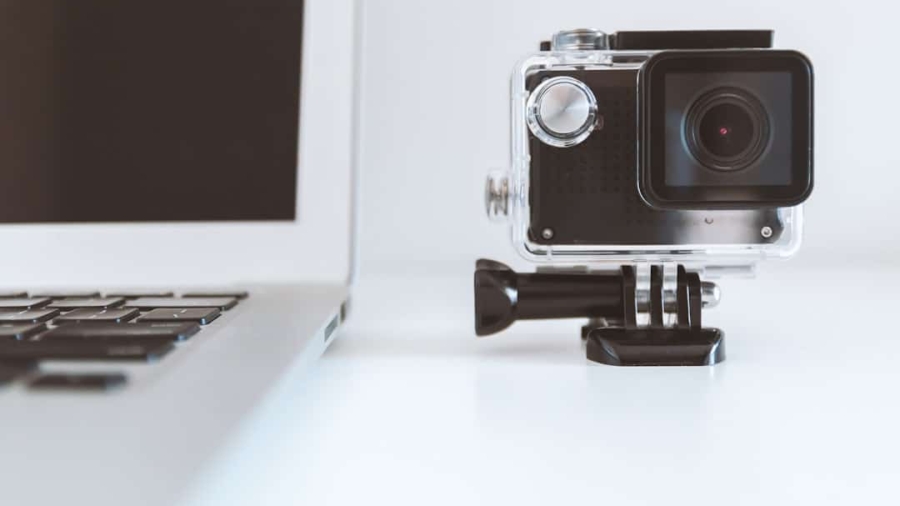The advent of smart contact lenses represents a significant leap in the intersection of technology and healthcare. These innovative devices are not merely corrective lenses; they are sophisticated pieces of technology designed to monitor health metrics and enhance the user experience. Smart contact lenses integrate sensors, microelectronics, and wireless communication capabilities, allowing them to collect and transmit data in real-time.
This technology has the potential to revolutionize how we approach health monitoring, particularly for chronic conditions such as diabetes, where continuous glucose monitoring is crucial. The concept of smart contact lenses is rooted in the desire to create unobtrusive health monitoring solutions that seamlessly integrate into daily life. Unlike traditional health monitoring devices that can be cumbersome or require frequent manual input, smart contact lenses offer a hands-free alternative.
They can provide users with critical health information without interrupting their daily activities, thus promoting a more proactive approach to health management. As research and development in this field continue to advance, the possibilities for smart contact lenses are expanding, promising a future where they could play a pivotal role in personalized healthcare.
Key Takeaways
- Smart contact lenses are a revolutionary technology that integrates electronic components into traditional contact lenses to provide various functionalities.
- Current smart contact lens technology includes features such as glucose monitoring for diabetics, augmented reality displays, and continuous health monitoring capabilities.
- Continuous health monitoring with smart contact lenses offers benefits such as real-time data collection, early disease detection, and personalized healthcare management.
- Challenges and limitations of smart contact lenses for health monitoring include technical issues, user acceptance, and potential risks of over-reliance on technology.
- Future advancements in smart contact lens technology may include improved sensors, enhanced data processing capabilities, and expanded functionalities for various health monitoring applications.
Current State of Smart Contact Lens Technology
As of now, several companies and research institutions are actively developing smart contact lens technology, with varying degrees of sophistication and application.
These lenses utilize microfluidic technology to analyze tear fluid and provide real-time glucose readings, potentially eliminating the need for finger-prick blood tests.
This innovation highlights the potential for smart contact lenses to transform diabetes management by providing continuous monitoring and immediate feedback. Another significant development is the work being done by Mojo Vision, which is developing augmented reality (AR) smart contact lenses. These lenses are designed to overlay digital information onto the real world, enhancing the user’s visual experience.
The technology incorporates a tiny display that can project images directly onto the retina, allowing users to access information without looking at a separate device. This application not only showcases the versatility of smart contact lenses but also opens up new avenues for interaction with digital content in everyday life. The current state of smart contact lens technology is characterized by rapid advancements and a growing interest from both consumers and healthcare professionals.
Benefits of Continuous Health Monitoring with Smart Contact Lenses

One of the most compelling advantages of smart contact lenses is their ability to facilitate continuous health monitoring. For individuals with chronic conditions such as diabetes, hypertension, or cardiovascular diseases, having real-time access to health data can be life-changing. Smart contact lenses can provide users with immediate insights into their physiological status, enabling timely interventions when necessary.
For instance, a diabetic patient could receive alerts about fluctuating glucose levels directly through their lenses, allowing them to take corrective actions before complications arise. Moreover, continuous monitoring through smart contact lenses can lead to improved patient engagement and adherence to treatment plans. When patients have access to real-time data about their health, they are more likely to take an active role in managing their conditions.
This empowerment can foster better communication between patients and healthcare providers, as data collected from smart lenses can be shared during consultations, leading to more informed decision-making. The integration of such technology into daily life not only enhances individual health outcomes but also has the potential to reduce healthcare costs by preventing complications associated with unmanaged chronic conditions.
Challenges and Limitations of Smart Contact Lenses for Health Monitoring
Despite the promising potential of smart contact lenses, several challenges and limitations must be addressed before they can become mainstream health monitoring tools. One significant hurdle is the technical complexity involved in developing reliable sensors that can accurately measure health metrics from tear fluid or other biological samples. The accuracy and reliability of these measurements are paramount; any discrepancies could lead to mismanagement of health conditions.
Ensuring that these devices can function effectively in various environmental conditions and over extended periods is also a critical concern. Additionally, there are practical challenges related to user comfort and acceptance. Many individuals may be hesitant to adopt smart contact lenses due to concerns about comfort, safety, or the potential for eye infections associated with wearing lenses for prolonged periods.
Furthermore, the integration of electronic components into a device that is worn on the eye raises questions about biocompatibility and long-term effects on ocular health. Addressing these concerns through rigorous testing and user feedback will be essential for gaining public trust and ensuring widespread adoption of this technology.
Future Advancements in Smart Contact Lens Technology
Looking ahead, the future of smart contact lens technology is poised for remarkable advancements driven by ongoing research and innovation. One area of focus is enhancing the functionality of these lenses through improved sensor technology and miniaturization of electronic components. As materials science progresses, it may become possible to create more flexible and biocompatible materials that can house advanced sensors without compromising comfort or safety.
This could lead to lenses capable of monitoring a broader range of health metrics beyond glucose levels, such as hydration status or intraocular pressure. Moreover, advancements in artificial intelligence (AI) and machine learning could play a pivotal role in interpreting the data collected by smart contact lenses. By analyzing patterns in health data over time, AI algorithms could provide personalized insights and recommendations tailored to individual users.
This level of customization could enhance the effectiveness of health monitoring and management strategies, making smart contact lenses not just passive data collectors but active participants in a user’s healthcare journey.
Potential Applications of Smart Contact Lenses Beyond Health Monitoring

While health monitoring is a primary focus for smart contact lens technology, its potential applications extend far beyond this realm. One exciting possibility lies in augmented reality (AR) applications that could transform how users interact with their environment. Imagine a scenario where users can receive navigation prompts directly within their field of vision while walking or cycling, enhancing safety and convenience without the need for handheld devices.
This capability could revolutionize industries such as tourism, education, and entertainment by providing immersive experiences that blend digital content with the physical world. Additionally, smart contact lenses could find applications in fields such as sports performance enhancement. Athletes could benefit from real-time feedback on their physiological metrics during training sessions or competitions, allowing them to optimize their performance based on immediate data analysis.
Coaches could also utilize this information to tailor training regimens more effectively, leading to improved outcomes for athletes at all levels. The versatility of smart contact lenses opens up a myriad of possibilities that extend well beyond traditional health monitoring.
Ethical and Privacy Considerations with Smart Contact Lenses
As with any emerging technology that collects personal data, ethical and privacy considerations surrounding smart contact lenses are paramount. The continuous collection of sensitive health information raises questions about data security and user consent. Who owns the data generated by these devices?
How will it be stored, shared, and protected from unauthorized access? These questions must be addressed through robust regulatory frameworks that prioritize user privacy while fostering innovation in this field. Moreover, there is a risk that reliance on smart contact lenses for health monitoring could lead to over-medicalization or anxiety among users who may become overly focused on their health metrics.
Striking a balance between leveraging technology for improved health outcomes while ensuring that users maintain a healthy relationship with their well-being is crucial. Ethical considerations must guide the development and deployment of smart contact lens technology to ensure it serves as a tool for empowerment rather than a source of stress or concern.
The Impact of Smart Contact Lenses on the Future of Healthcare
The emergence of smart contact lenses heralds a new era in healthcare where technology seamlessly integrates into daily life to enhance health monitoring and management. With their ability to provide continuous insights into vital health metrics, these devices have the potential to empower individuals in managing chronic conditions more effectively while promoting proactive healthcare practices. As advancements continue in sensor technology, AI integration, and user experience design, smart contact lenses may become indispensable tools in personalized healthcare.
However, realizing this potential requires addressing significant challenges related to technical reliability, user acceptance, ethical considerations, and privacy concerns. By navigating these complexities thoughtfully, stakeholders can ensure that smart contact lens technology evolves responsibly and equitably. As we look toward the future, it is clear that smart contact lenses will play an increasingly important role in shaping how we approach health monitoring and management, ultimately transforming the landscape of healthcare as we know it today.
In a recent article discussing the future of smart contact lenses for continuous health monitoring, it is interesting to note the advancements in technology that are shaping the way we monitor our health. For those interested in exploring the latest tech products of 2023, this article provides a comprehensive list of top picks and reviews. It is clear that innovation in the field of health monitoring is closely tied to advancements in technology, making it an exciting time for those interested in wearable health devices.
FAQs
What are smart contact lenses for continuous health monitoring?
Smart contact lenses are a type of wearable technology that can monitor various health metrics such as glucose levels, intraocular pressure, and even detect diseases through the analysis of tears. These lenses are equipped with sensors and wireless technology to continuously collect and transmit data.
How do smart contact lenses work?
Smart contact lenses work by integrating miniaturized sensors, wireless communication components, and data processing capabilities into the lens material. These components can collect and analyze biological data from the eye or tears, and then transmit the information to a smartphone or other device for further analysis.
What are the potential benefits of smart contact lenses for continuous health monitoring?
The potential benefits of smart contact lenses for continuous health monitoring include real-time monitoring of health metrics, early detection of diseases, improved management of chronic conditions, and enhanced convenience for patients who require continuous monitoring.
What are the challenges and limitations of smart contact lenses for continuous health monitoring?
Challenges and limitations of smart contact lenses for continuous health monitoring include the need for accurate and reliable sensor technology, ensuring comfort and safety for the wearer, data privacy and security concerns, and regulatory approval for medical use.
What is the current status of smart contact lenses for continuous health monitoring?
Smart contact lenses for continuous health monitoring are still in the research and development phase, with several companies and academic institutions working on prototypes and clinical trials. While some features such as glucose monitoring have been demonstrated in early studies, widespread commercial availability is still pending regulatory approval.

